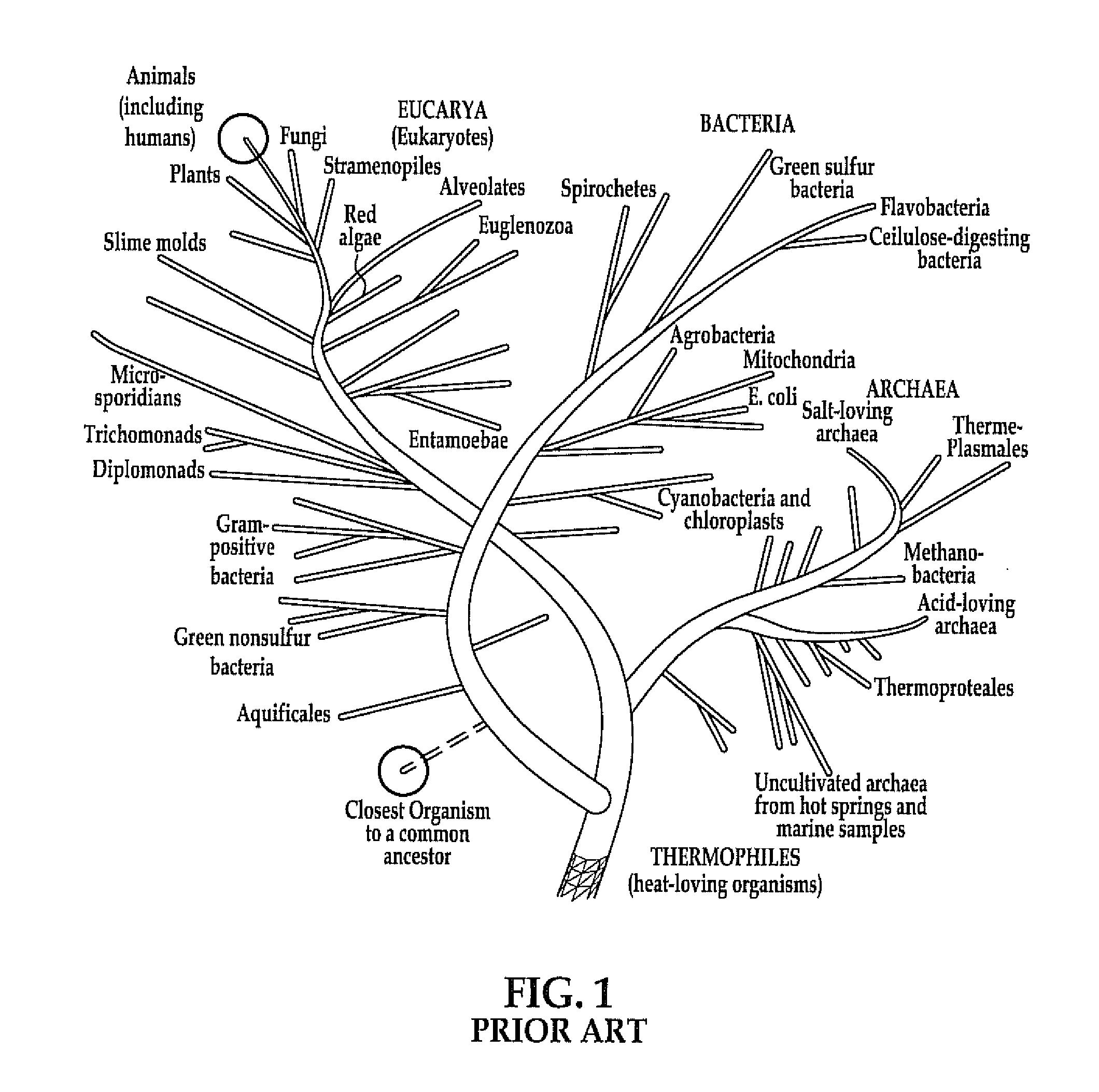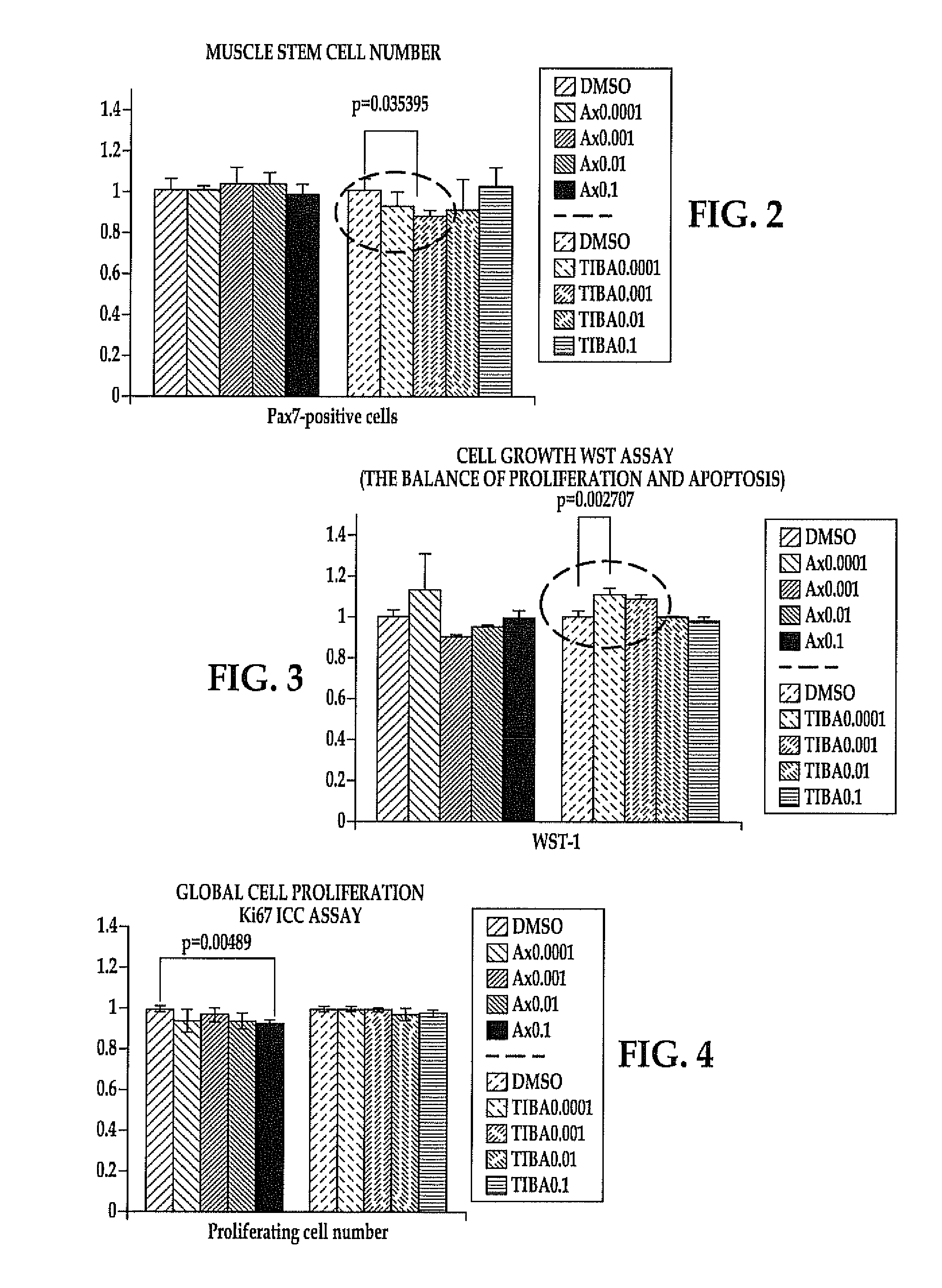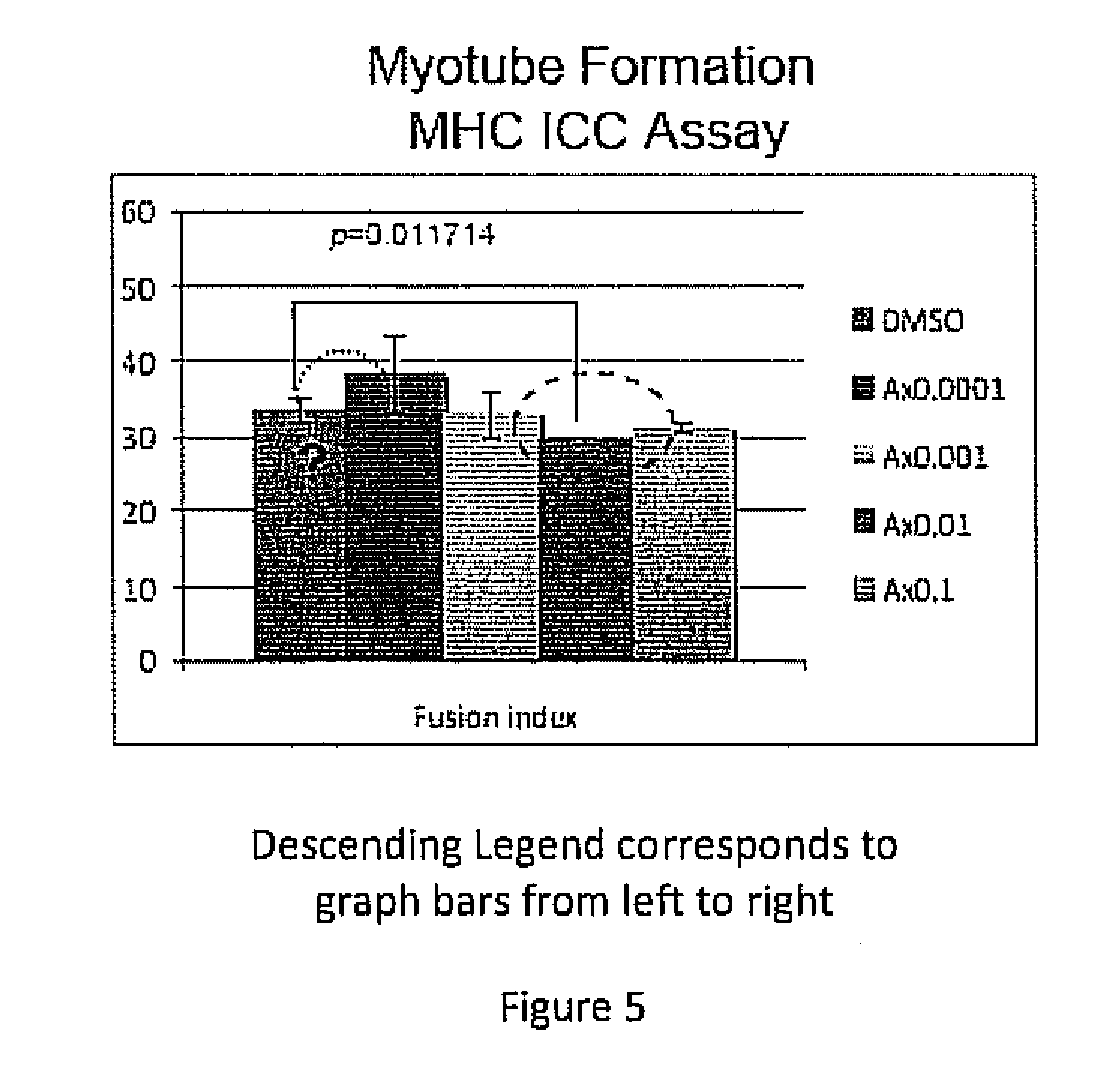Biomodulators for treatment or prevention of disease
a biomodulator and disease technology, applied in the field of biomodulators, can solve the problems of not understanding low molecular weight biomodulators, long, complex and expensive interventions, and transforming all these expectations into reality, and achieve the effect of influencing the growth or differentiation of plant cells
- Summary
- Abstract
- Description
- Claims
- Application Information
AI Technical Summary
Benefits of technology
Problems solved by technology
Method used
Image
Examples
example 1
Differentiation and Growth of Stem Cells
[0084]Reagents: The auxin 2,4-Dichlorophenoxyacetic acid, and auxin antagonist, TIBA (2,3,5-triiodobenzoic acid), are purchased from Sigma-Aldrich (St. Louis, Mo.), After dissolving, these compounds are stored at −20° C. Concentrations used are 0.0001, 0.001, 0.01 and 0.1 μg / ml.
[0085]C2C12 muscle stem cells are used. Cells from low-passage frozen stocks are seeded in a 10 cm culture dish. After reaching 60% confluence, cells are passaged into an 8-well chamber slide (BD Biosciences, CA, USA). C2C12 cells are seeded on an 8-well chamber slide (3.5×103 cells / well). On day 3 after exposure to biomodulator or control, cells are fixed for immunocytochemistry (ICC) of MyoD and Ki67. For MHC and Pax7 immunostaining, cell culture media is replaced from the growth media (GM) to the differentiation media (DM) to induce terminal differentiation at day 5, and then cells are fixed for ICC of MHC and Pax7 at day 8. Media change and compound administration a...
example 2
[0091]To demonstrate the effect of biomodulator (3-indolyl-acetic acid) on cell viability, cellular ATP levels are measured before and after treating selected cell lines with Auxin. Selected cell lines include C33A cervical carcinoma cells, Mrc-5 normal lung fibroblasts, PC-3 human prostatic carcinoma cell line, OVCAR-3 human ovarian carcinoma cell line, H460 non-small cell lung cancer cell line, A549 human lung carcinoma cell line, H1299 human non-small cell lung cancer cells, MCF-7 human breast cancer cell line, SW-480 human adenocarcinoma cell line, B16-F1 mouse melanoma cell line (American Type Culture Collection, Manassas, Va., USA), HMEC normal mammary epithelial cells (Clonetics San Diego, Calif., USA) and ADR-RES human breast cancer cell line (NCI, MD, USA), which are cultured in the media recommended by the American Type Culture Collection. The cell lines are plated in 96-well microliter plates (PerkinElmer Life Sciences Inc., Boston, Mass., USA) at a confluency that allows...
example 3
[0094]Biomodulator is administered to 5 different cell lines to induce differentiation in the target cell lines. Standard differentiation markers such as integrin expression, expression of involucrin, secretion of BMP2, Troponin T expression, Stat3 expression, and other known markers of cell differentiation are evaluated following exposure of cells to biomodulator. Expression of BMP2 is analyzed in whole cell lysates by western blot with an anti-BMP2 antibody. Cell culture, lysis, protein detection methods are known and common in the art. In all cell lines the presence of biomodulator induces cell differentiation as measured by the presence of cell specific differentiation markers.
PUM
| Property | Measurement | Unit |
|---|---|---|
| concentration | aaaaa | aaaaa |
| concentration | aaaaa | aaaaa |
| concentration | aaaaa | aaaaa |
Abstract
Description
Claims
Application Information
 Login to View More
Login to View More - R&D
- Intellectual Property
- Life Sciences
- Materials
- Tech Scout
- Unparalleled Data Quality
- Higher Quality Content
- 60% Fewer Hallucinations
Browse by: Latest US Patents, China's latest patents, Technical Efficacy Thesaurus, Application Domain, Technology Topic, Popular Technical Reports.
© 2025 PatSnap. All rights reserved.Legal|Privacy policy|Modern Slavery Act Transparency Statement|Sitemap|About US| Contact US: help@patsnap.com



